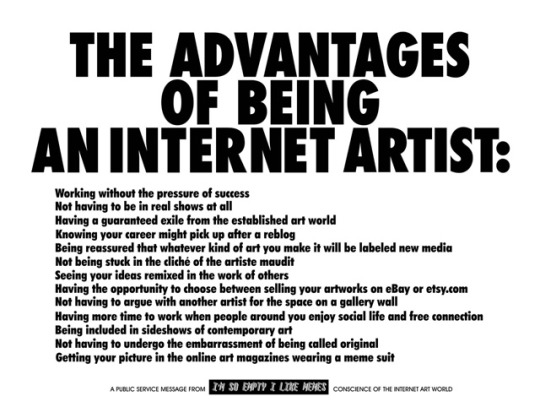Text
Demand #9 Institute for Precarious Consciousness: Abolish the control society – and the mass-production of stress and anxiety in the workplace, society, and public life

Guest demand by the Institute for Precarious Consciousness
There is a current, widespreadpattern of regulation, surveillance, micro-management, and control extendingacross a range of social spheres. In the workplace, these include measures suchas surveillance, quality benchmarks and performance goals (often unachievable), and vulnerability to easy firing. In public spaces, they include things like CCTV, threatening posters connected to crackdowns, the presence of police and wardens, and the criminalisation of a range of deviant uses of space (begging, loitering, etc). Other manifestations of the same pattern include benefit sanctions and requirements, Internet and phone surveillance, the proliferation of broad and vague laws, anti-protest tactics such as kettling, and the spread of biometric technologies and ID systems.
The psychological and social effect of this process is a mass production of anxiety and related psychological problems (including trauma, fatigue, depression, and impotent rage). Unable to let our guard down in any space for fear of violating a minor prohibition or falling behind the required performance level, most people have become hypervigilant and excessively stressed. We are increasingly unable to listen to our own bodies, to relate compassionately to one another, or to marshal the courage and willpower to resist.
This issue is bigger than one or another tactic or mechanism of management or surveillance. It is built into the fabric of neoliberal social organisation and its way of responding to social problems – the assumption that more or better top-down regulation is a (cost-free) cure-all, and that security and efficiency provide sufficient justifications for intrusive measures which destroy the openness of spaces and the autonomy of individuals and groups. We need to expose the psychological costs of a hyper-regulated society, combat the managerialisation and securitisation of space, and create spaces which refuse these kinds of logics, so as to reconstruct our abilities to relax, concentrate, empathise, communicate, formulate autonomous desires, and struggle against dominant institutions. Let’s create localised economies and subsistence mechanisms to reduce vulnerability to the system, and slow-pace ‘listening’ spaces to slow down the pace of life. Let’s create new forms of consciousness-raising to learn about the psychological impact of the present system and theorise its mechanisms. Let’s demand on a psychological level the same right not to be destroyed, enslaved or tortured by the system that we demand on a physical and material level. Let’s create a world of unmanageable subjects, and forms of life through which such subjects can be reproduced. Let’s rediscover our inner core of creativity and autonomy, and recreate a world where we can live through joy, not fear.
13th March 2015
7 notes
·
View notes
Text
Byung-Chul Han - La sociedad del cansancio

Descarga Sin DRM en español.
Epub
Mobi
2 notes
·
View notes
Photo

Are you an Art Bro?
from Artist Profile: Jennifer Chan
//You are an art bro if you're a man or a woman who thinks the art world is equal as is, and that there are no internal politics that exclude certain artists from participating and being as visible as you are. The art bro mostly validates the voices and work of men, in the same way men quote the words of other men who quote the words of other men–patrilineage produces patriarchy. Art bros don't believe in community or solidarity.
//To be more incendiary, I will cop pickup artist terms to compare art bros to the idea of an "alpha" or a "beta" male–terms created by the male seduction communities and men's rights blogospheres ("manosphere") to push insecure men to honor traditional ideas of masculinity. That's gender, it's always a self-conscious and precarious performance anyway. ;)
The alpha art bro is shameless, confident, sociopathically opportunistic, and defensive with professional critique. The beta may be polite and eloquent but he tip-toes around being a bro; he feels entitled and competitive to the accomplishments of art bros and schmoozes with who they perceive to be art power while crying bitter tears of rejection. Omega males do their own things; they don't believe in tribal feudalism, observe and get their opportunities while the alpha and beta dudes are pissfighting. The last "type" I didn't include in the flowchart is the ~chill bro~ with a bit of Peter Pan syndrome. He might smoke too much pot or be late all the time. He's apathetic to everything except his pleasure and just cruises on, working when he feels like it.
4 notes
·
View notes
Link
In response to concerns about the lack of women of color (WOC) and queer or trans women of color (QTWOC) artists in Deep Lab:
Dorothy Santos (DS): I feel a strong sense of frustration, but I am resigned to the lack of representation. The second part of the question is tricky: If radical and marginalized voices were meant to be a part of the conversation, why was the group specifically hand-picked? Why not allow women to have a seat at the table and join the conversation? It becomes challenging when WOC and QTWOC are exchanging and sharing knowledge only among themselves — the situation becomes circular.
Anuradha Vikram (AV), educator, writer, curator at 18th Street Arts Center: Women of color have different and necessary perspectives on questions of surveillance, criminalization, and embodiment that need to be represented. [...] Equally problematic is our overemphasis on American technologists when much of the most interesting work in this area is being done in places where technology is transforming economics and culture such as China, India, Brazil. [...] Ageism is also a major problem, hiring 25-year-olds instead of 35-year-olds because 60-year-olds think they have a better handle on tech issues (when the younger generation sometimes has not yet figured out how to look beyond corporate priorities with respect to tech).
Morehshin Allahyari (MA), new media and digital artist, educator, curator: I think in general the exclusion of non-Western ethnicities is a very common problem in the field of art and technology. So, as a Middle-Eastern artist, I have struggled, feeling isolated in the new media art scene, being frustrated with the white and specifically Western topics, exhibitions, articles, panels, etc that also happen to always be the bubble of the same 30 artists. Rarely are new or unknown faces or artists being introduced or brought into these communities. Even when it comes down to feminist issues and events focused on women, WOC are mostly excluded. Their bodies, concerns, daily life struggle are rarely taken seriously or included in a lot of these events and publications.
0 notes
Link
'No Pineapple Left Behind' is an adorable and deeply depressing look at the US school system.
The same developer made a game called "Neocolonialism". The tagline for that game is "Ruin Everything".
2 notes
·
View notes
Link
Harry Sanderson reflects on the economy of networked image commodities and the chains of labour which underpin their appearance There is a relation, largely avoided and unexplored, between the ubiquity of digital commodities, and the capacity of these devices to reproduce and maintain a necessary insouciance towards the exploitation and violence required for their continued production.
(CGI) images cease to reflect the external world and get enclosed within the organism’s internal milieu, folding perception back into the subject’s endogenous apparitions instead of extending perception outside itself. […] The technology’s efficacy is [..] articulated in terms of how the patient becomes affectively ‘immersed’ in or ‘synchronized’ with the virtual environment.(Pasi Väliaho)
This analysis can be extended to the cognitive affects of CGI and interfacial modes of experience that digital commodities effect in civilian society, and their role in ‘modulating […] affective life’ in the creation of a de-politicised subject. The user internalises a distance from corporeal reality as they are progressively enveloped by a field of potential interactions and relationships."
0 notes
Video
youtube
"The reality we live in [...] consists of the wreckage of images. [...] We cannot understand this so-called reality anymore without understanding cinema, photography, 3d modeling, [3d] printing, all of these imaging techniques, because these constitute reality now. The world is imbued with the shrapnel of former images. It's edited, photoshopped, cobbled together from spam and scrap. Reality is post-produced and scripted, and affect is rendered as an after-effect. By now we live within the afterlife of images."
13 notes
·
View notes
Link
"In the early 1990s, informational capitalism hadn’t quite taken root. The internet was far less regulated, far less commodified. More of a maul and a maw than a mall. There seemed to be endless possibilities, it was a field of immanence, of becoming. And it was slow, low-res, glitch. Before ‘glitch’ became a cultural movement. But it’s easy to be nostalgic for that time." -Francesca da Rimini
2 notes
·
View notes
Photo
The Camera in the Mirror, Mario Santamaria
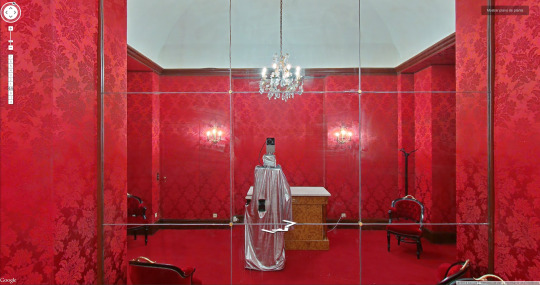
290 notes
·
View notes
Photo
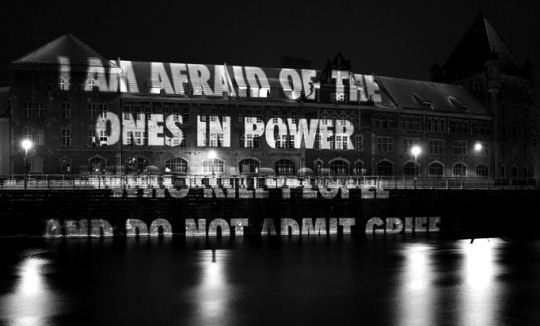
"I AM AFRAID OF THE ONES IN POWER WHO KILL PEOPLE AND DO NOT ADMIT GRIEF" | Jenny Holzer, "Projections"
34K notes
·
View notes
Photo
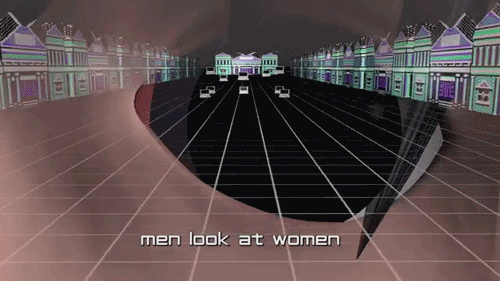

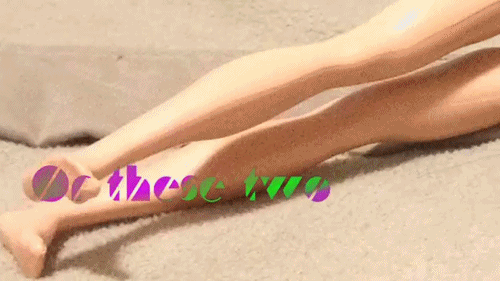
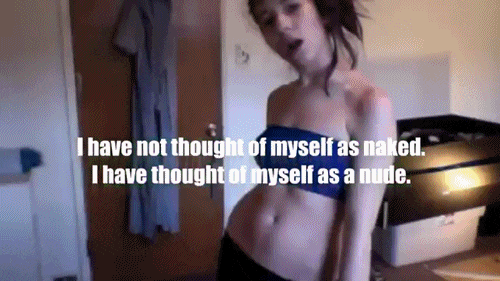

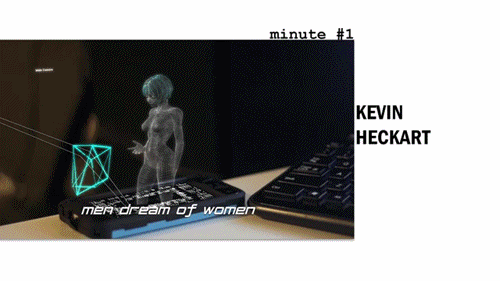
Ways Of Something
Net Art collaborative project curated by Lorna Mills is a reinterpretation of the landmark British 1972 documentary on reading art, ‘Ways Of Seeing’.
The second episode (concerned with the woman in art) makes its debut at the Transfer Gallery in Brooklyn on September 6th. For each 28 minute episode, an artist was assigned one minute of the original narration to produce visuals for. All the work was organized online.
Here is a sample clip put together by gabycepeda from the latest episode:
‘Ways of Something’, is a contemporary remake of John Berger’s BBC documentary, “Ways of Seeing” (1972).
Commissioned by The One Minutes, at the Sandberg Instituut in Amsterdam and compiled by Lorna Mills, the project consists of one-minute videos by fifty eight web-based artists who commonly work with 3D rendering, gifs, film remix, webcam performances, and websites to describe the cacophonous conditions of artmaking after the internet.
The screening at TRANSFER Gallery is based on the first two episodes of a four-part series of thirty-minute films created by art theorist John Berger and produced by Mike Dibb. In the original episode one, voice-of-God narration over iconic European paintings offer a careful dissection of traditional “fine art” media and the way society has come to understand them as art. The second episode is a contentious and sometimes maddening look at the female nude in the western tradition. The combined work is, in effect, art about art about television about the internet.
“Ways Of Something,” Screening + Discussion, Episode 1: Daniel Temkin, Rollin Leonard, Sara Ludy, Rhett Jones, Jaakko Pallasvuo, Dafna Ganani, Jennifer Chan, Rea McNamara, Theodore Darst, Matthew Williamson, Hector Llanquin, Christina Entcheva, V5MT, Marisa Olson, Joe McKay, Carla Gannis, Nicholas O’Brien, Eva Papamargariti, Rosa Menkman, Kristin Lucas, Jeremy Bailey & Kristen D. Schaffer, Giselle Zatonyl, Paul Wong, Alfredo Salazar-Caro, Sally McKay, RM Vaughan & Keith Cole & Jared Mitchell, Andrew Benson, Christian Petersen, Faith Holland, Jennifer McMackon; Episode 2: Kevin Heckart, Geraldine Juarez, Gaby Cepeda, Angela Washko, Emilie Gervais, LaTurbo Avedon, Lyla Rye, Mattie Hillock, Antonio Roberts, Georges Jacotey, Daniel Rourke, Sandra Rechico & Annie Onyi Cheung, Yoshi Sodeoka, Alma Alloro, LoVid, Andrea Crespo, Ad Minoliti, Arjun Ram Srivatsa, Carrie Gates, Isabella Streffen, Esteban Ottaso, ZIL & ZOY, Hyo Myoung Kim, Jesse Darling, Tristan Stevens, Erica Lapadat-Janzen, Claudia Hart, Anthony Antonellis, 7pm-10pm, TRANSFER Gallery, Brooklyn. (All Images Courtesy Lorna Mills)
Information about Transfer Gallery and the screening can be found here
To view the original 4 part program (highly recommended if you haven’t) can be found at UBU Web here
#ART#ART HISTORY#ARTISTS ON TUMBLR#NET ART#WAYS OF SEEING#JOHN BERGER#LORNA MILLS#TRANSFER GALLERY#BROOKLYN#NEW YORK
229 notes
·
View notes
Video
youtube
Guided Meditation - Anxiety (by youdjparents)
127 notes
·
View notes
Photo
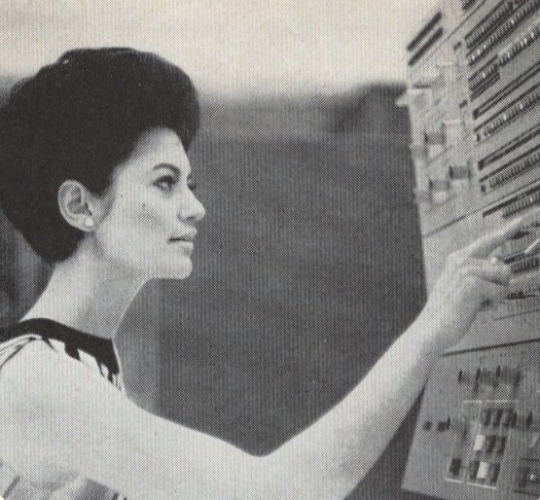
What Happened to the Computer Girls?
Believe it or not, in the 1960’s, programming was seen as women’s work. It was even touted as being “just like planning a dinner”.
So what happened?
Eventually male programmers wanted to raise their status above “women’s work”. So they actively discouraged women from these positions, designed hiring tests rigged for men, and even created the stereotype that programmers are disinterested in people. No wonder in the years since, it’s still a male dominated field. Women earned only 18% of the computer science degrees awarded in 2008-2011.
Alright ladies, we need to bust this myth. It’s been too long. Find organizations like Scientista or Sally Ride Science that help encourage women and girls in STEM interests. Find mentors and connect with other women interested in STEM.
26K notes
·
View notes
Video
I recently took a data journalism MOOC and I tried to make a case for this piece to be considered as an example of good data journalism.
vimeo
Angela Washko, Millionaire Worthy: A Primer (Home Edition), 2013.
10 notes
·
View notes
Video
vimeo
This video makes me laugh so hard. And then I want to cry. Every. time.
2 notes
·
View notes
